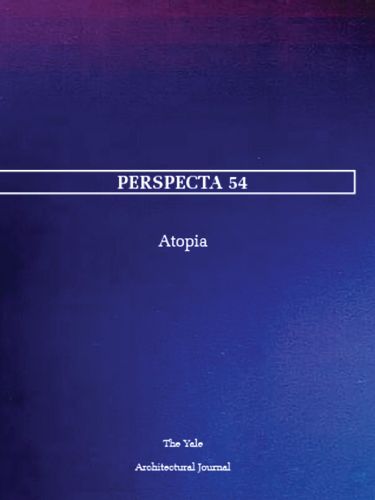Readings Newsletter
Become a Readings Member to make your shopping experience even easier.
Sign in or sign up for free!
You’re not far away from qualifying for FREE standard shipping within Australia
You’ve qualified for FREE standard shipping within Australia
The cart is loading…






Atopia as both the site of architecture’s critical confrontation with hegemonic systems and the theoretical space in which its own processes can be challenged.
A literal no-place, atopia represents the spatial end-product of a society seemingly flattened by supra-territorial flows of information and material. It expresses both a physical artifact and condition of mass culture, and like the global systems of production and consumption from which it is conceived, atopia is both nowhere and everywhere at once. For the contributors of Perspecta 54, the ephemeral conditions of atopia are also an invitation to an equally unconstrained critical practice. Blurred boundaries-geopolitical, virtual, technical, disciplinary-offer sites for transgressive speculation and critique from beyond the limits of traditional design agency.
What results is a form of design practice that ambiguously straddles impossibility and hyperreality. Atopia rejects both the escapist fantasy of utopia and the nihilism of dystopia, favoring instead a conceptual middle ground from which real-world conditions can be productively engaged and challenged. Architecture’s traditional objectives of critical inquiry-particularly the location of modes of complicity, agency, and resistance within larger structures-are mediated and reframed through nontraditional strategies of speculative design and fiction. For a profession that is routinely asked to navigate extreme complexity with limited tools, this approach suggests an expanded operational domain and possibilities for reinvigorated creative thought. From urban crises and climate emergencies to border disputes and geopolitics, Perspecta 54 examines atopia as both the site of architecture’s critical confrontation with hegemonic systems and the theoretical space in which its own processes can be challenged.
$9.00 standard shipping within Australia
FREE standard shipping within Australia for orders over $100.00
Express & International shipping calculated at checkout
Stock availability can be subject to change without notice. We recommend calling the shop or contacting our online team to check availability of low stock items. Please see our Shopping Online page for more details.
Atopia as both the site of architecture’s critical confrontation with hegemonic systems and the theoretical space in which its own processes can be challenged.
A literal no-place, atopia represents the spatial end-product of a society seemingly flattened by supra-territorial flows of information and material. It expresses both a physical artifact and condition of mass culture, and like the global systems of production and consumption from which it is conceived, atopia is both nowhere and everywhere at once. For the contributors of Perspecta 54, the ephemeral conditions of atopia are also an invitation to an equally unconstrained critical practice. Blurred boundaries-geopolitical, virtual, technical, disciplinary-offer sites for transgressive speculation and critique from beyond the limits of traditional design agency.
What results is a form of design practice that ambiguously straddles impossibility and hyperreality. Atopia rejects both the escapist fantasy of utopia and the nihilism of dystopia, favoring instead a conceptual middle ground from which real-world conditions can be productively engaged and challenged. Architecture’s traditional objectives of critical inquiry-particularly the location of modes of complicity, agency, and resistance within larger structures-are mediated and reframed through nontraditional strategies of speculative design and fiction. For a profession that is routinely asked to navigate extreme complexity with limited tools, this approach suggests an expanded operational domain and possibilities for reinvigorated creative thought. From urban crises and climate emergencies to border disputes and geopolitics, Perspecta 54 examines atopia as both the site of architecture’s critical confrontation with hegemonic systems and the theoretical space in which its own processes can be challenged.